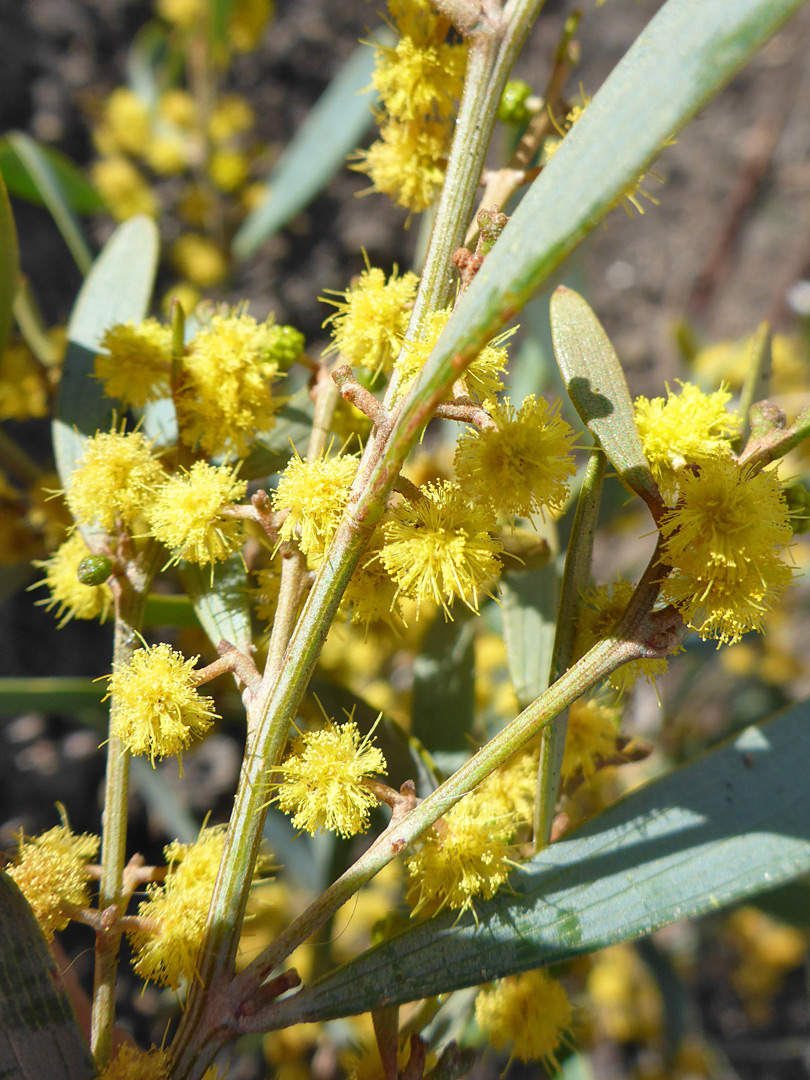Acacia redolens seed
Acacia redolens, commonly known as prostrate acacia, bank catclaw, or spreading acacia, is a fast-growing, evergreen shrub in the Fabaceae (legume) family. Native to Western Australia, this hardy plant has been widely introduced to other dry and semi-arid regions, especially in California and the American Southwest, where it is valued for erosion control, landscaping, and its exceptional drought resistance.
Botanical Description
- Growth Form: A dense, spreading or prostrate shrub typically growing 0.5 to 2 meters tall and up to 3–5 meters wide.
- Leaves: Like many acacias, it has phyllodes (flattened leaf-like stems) instead of true leaves—these are gray-green and slightly fragrant.
- Flowers: Small, golden-yellow, globular flowers bloom in late winter to spring, often with a sweet or musky scent.
- seed Pods: Flat, brown pods follow the flowers and contain several hard seeds.
- Aroma: The term “redolens” refers to its fragrant foliage, which releases a noticeable scent, especially in warm weather.
Primary Uses and Benefits
- Erosion Control and Soil Stabilization
- Acacia redolens is widely planted along roadsides, embankments, and slopes to combat soil erosion.
- Its extensive root system holds soil in place, making it an ideal plant for land reclamation and stabilizing disturbed landscapes.
- Drought-Tolerant Landscaping (Xeriscaping)
- Due to its low water requirements, it is a popular choice in water-wise gardens and public landscapes in dry regions.
- It forms an attractive, low-maintenance ground cover that suppresses weeds and withstands harsh conditions, including poor soils and extreme temperatures.
- Ornamental Use
- The plant’s soft, silvery-green foliage and bright yellow flowers provide year-round color and texture.
- It is used in medians, parks, commercial landscapes, and large-scale planting projects where a rugged, low-growing plant is desired.
- Nitrogen Fixation
- Like other legumes, Acacia redolens hosts nitrogen-fixing bacteria in its root nodules, enriching the soil and benefiting surrounding vegetation.
Ecological and Environmental Value
- Pollinator Support: The flowers attract bees and other pollinators, providing early-season nectar.
- Habitat Creation: Provides cover and nesting material for birds and small animals.
- Tolerant of Salinity: Can be used in areas with saline or alkaline soils, which are typically challenging for plant growth.
Invasiveness and Management
- In some introduced regions (e.g., California and parts of the Mediterranean), Acacia redolens has shown invasive tendencies, spreading into natural habitats and displacing native plants.
- It is important to monitor its spread and manage seed dispersal, especially in sensitive ecosystems.
- Pruning or mowing can help maintain its size and prevent unwanted spread.
Safety and Toxicity
- Generally considered non-toxic to humans and animals.
- However, as with many acacias, seeds and pods are not recommended for consumption, and ingestion in large quantities may be harmful.
Conclusion
Acacia redolens is a versatile and resilient shrub with many applications in landscaping, erosion control, and ecological restoration. Its drought tolerance, nitrogen-fixing ability, and attractive foliage make it an ideal choice for sustainable gardening in arid regions. However, care must be taken to manage its growth in non-native environments due to its potential invasiveness. Overall, it is a valuable species for both functional and ornamental purposes in the right settings.
Acacia redolens: Uses, Applications, and Environmental Importance

